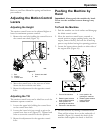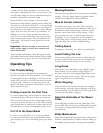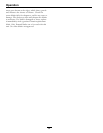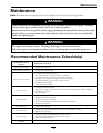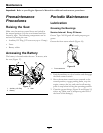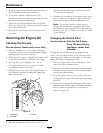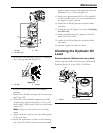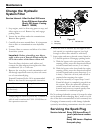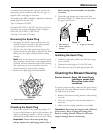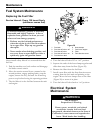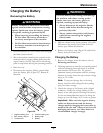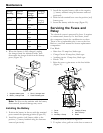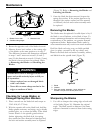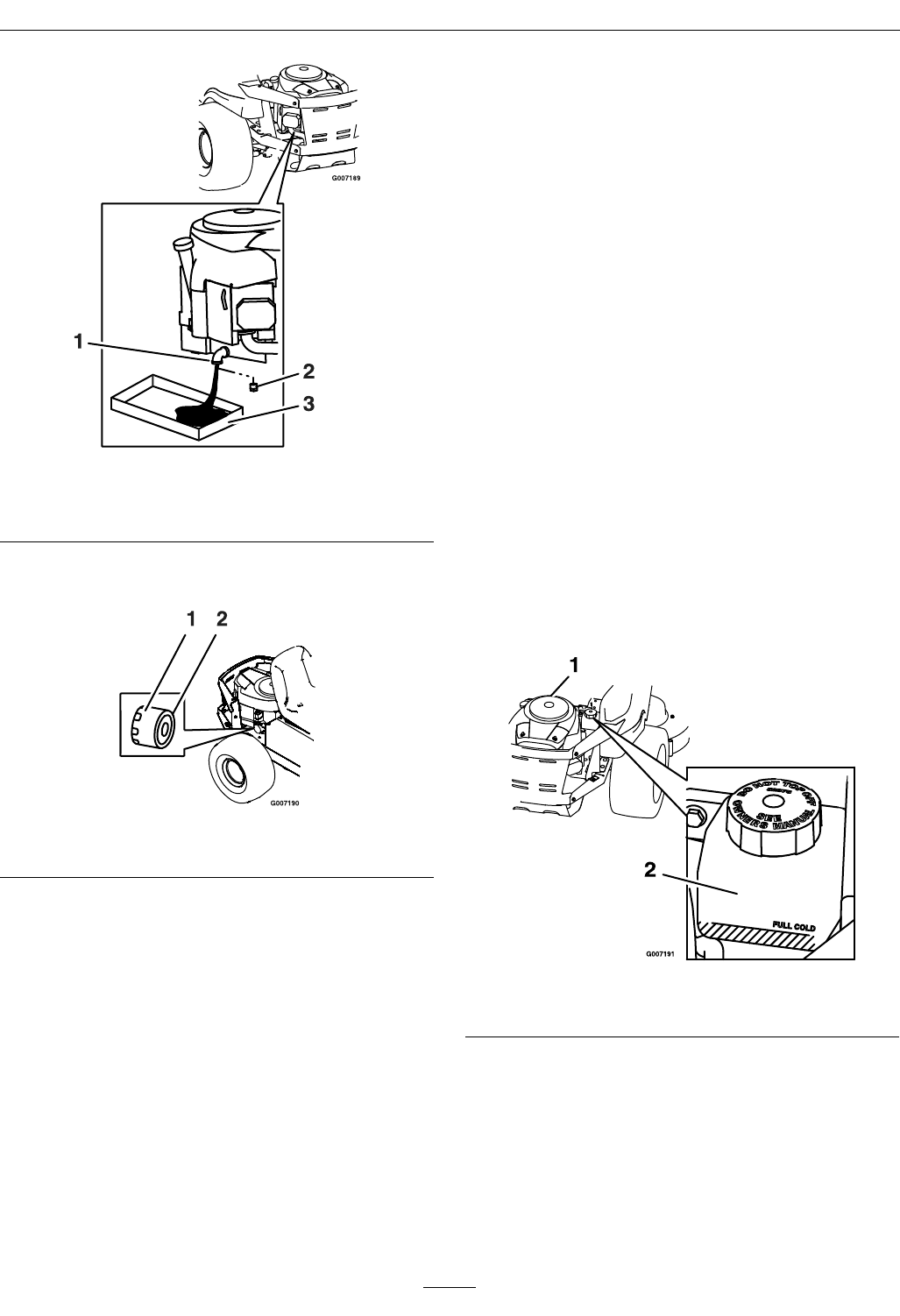
Maintenance
Figure 22
1. Oil drain
3. Pan
2. Oil drain plug
5. Remove the oil drain plug (Figure 22 ). Remove
the oil ll cap/dipstick (Figure 21).
Figure 23
1. Oil lter 2. Gasket
6. Be sure to allow ample time for complete
drainage.
7. Remove the old lter and wipe off the mounting
pad (Figure 23).
8. When the oil has drained completely, install the
oil drain plug. Tighten the plug to 14 N-m (125
in-lb) torque. Wipe up any excess oil on the frame
(Figure 22 ).
Note: Dispose of the used oil at a recycling
center.
9. Apply a thin lm of clean oil to the rubber gasket
on the new lter.
10. Install the replacement oil lter to the mounting
pad. Turn the oil lter clockwise until the rubber
gasket contacts the pad, then tighten the lter an
additional 1/2 to 3/4 turn (Figure 23).
11. Slowly pour approximately 80% of the specied
oil into the ller tube—use oil recommended in
the Engine Owner’s Manual.
12. Install the oil ll cap/dipstick and push rmly
into place.
13. Check the oil level (Figure 21); refer to Checking
the Oil Level.
14. Slowly add additional oil to bring it to the full
mark. Do Not overll.
15. Install the oil ll cap/dipstick and push rmly
into place.
16. Start the engine and check for leaks.
Checking the Hydraulic Oil
Level
Service Interval: Before each use or daily
Check expansion tank and if necessary add Exmark
Premium Hydro oil to the FULL COLD line.
Figure 24
1. Engine 2. Expansion tank
33



